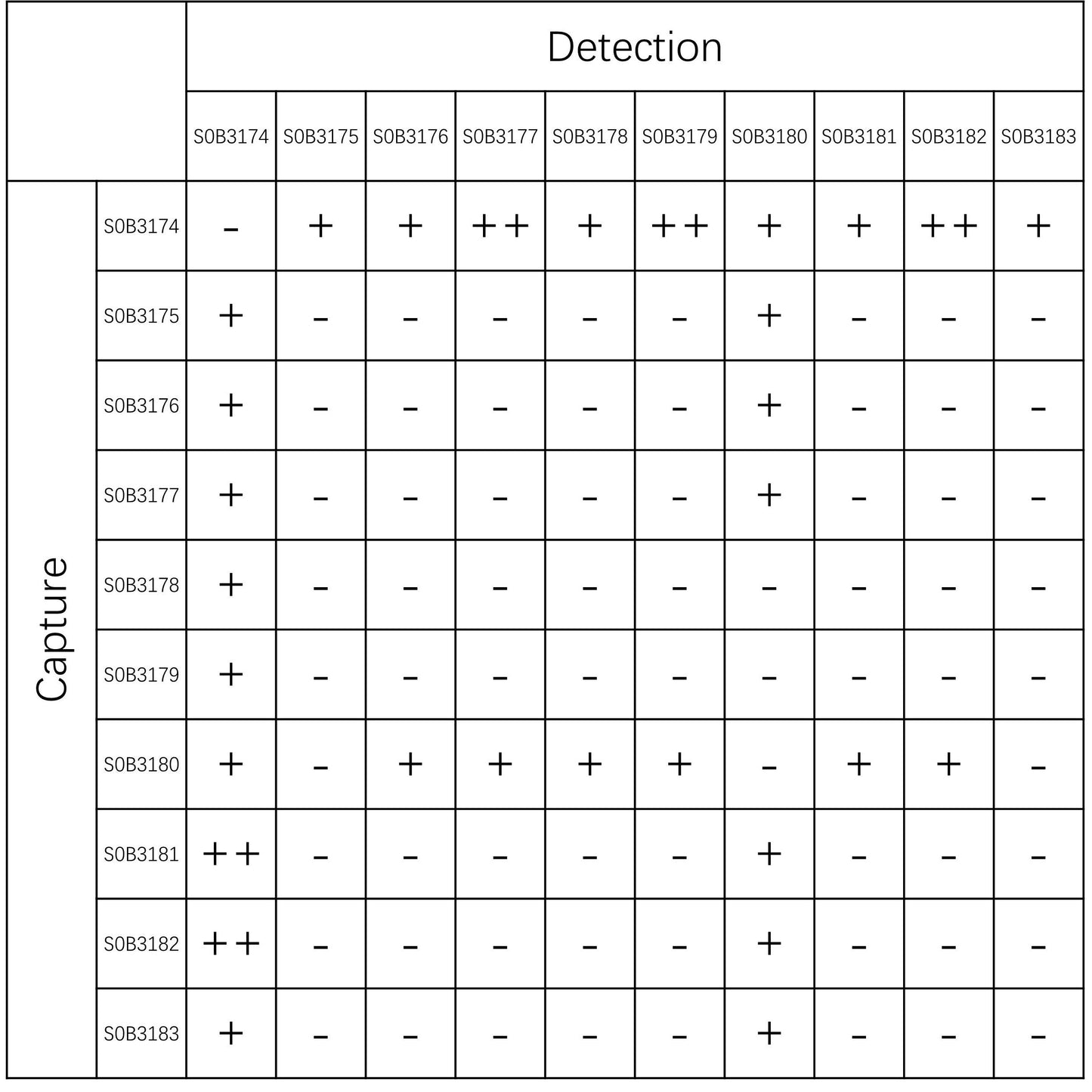Product Details
Product Details
Product Specification
| Host | Rabbit |
| Antigen | HBP |
| Synonyms | Heparin-binding protein, Azurocidin, Cationic antimicrobial protein CAP37 |
| Immunogen | Recombinant Protein |
| Accession | P20160 |
| Clone Number | SDT-506-99 |
| Antibody Type | Recombinant mAb |
| Isotype | IgG |
| Application | Lateral Flow, CLIA, Sandwich ELISA |
| Reactivity | Hu |
| Cross Reactivity | Does not recognize Elastase |
| Purification | Protein A |
| Concentration | 2 mg/ml |
| Purity | >95% by HPLC |
| Conjugation | Unconjugated |
| Physical Appearance | Liquid |
| Storage Buffer | PBS pH7.4, 0.03% Proclin 300 |
| Stability & Storage | 12 months from date of receipt / reconstitution, 2 to 8 °C as supplied |
Dilution
| application | dilution | species |
| Sandwich ELISA | N/A | |
| Lateral Flow | N/A |
Background
Heparin-binding protein (HBP), also known as Azurocidin and cationic antimicrobial protein 37 (CAP37), is a member of the serine protease family that includes Cathepsin G, neutrophil elastase (NE), and proteinase 3 (PR3). HBP has been recognized as a player in the activation and modulation of the immune response and may act to alarm the immune system. The cationic domain at one side of the protein is essential for its antimicrobial activity. It is stored in azurophil granules as well as secretory granules and as a result partly released at early stage of extravasation. HBP is involved in chemotaxis and activation of monocytes, cytokine release and phagocytosis leading to more efficient bacterial clearance. HBP is a reasonable therapeutic target for a variety of inflammatory disease conditions, and a promising biomarker in predicting development and prognosis of severe sepsis and septic shock.
Picture
Picture
Paired Recommendations



